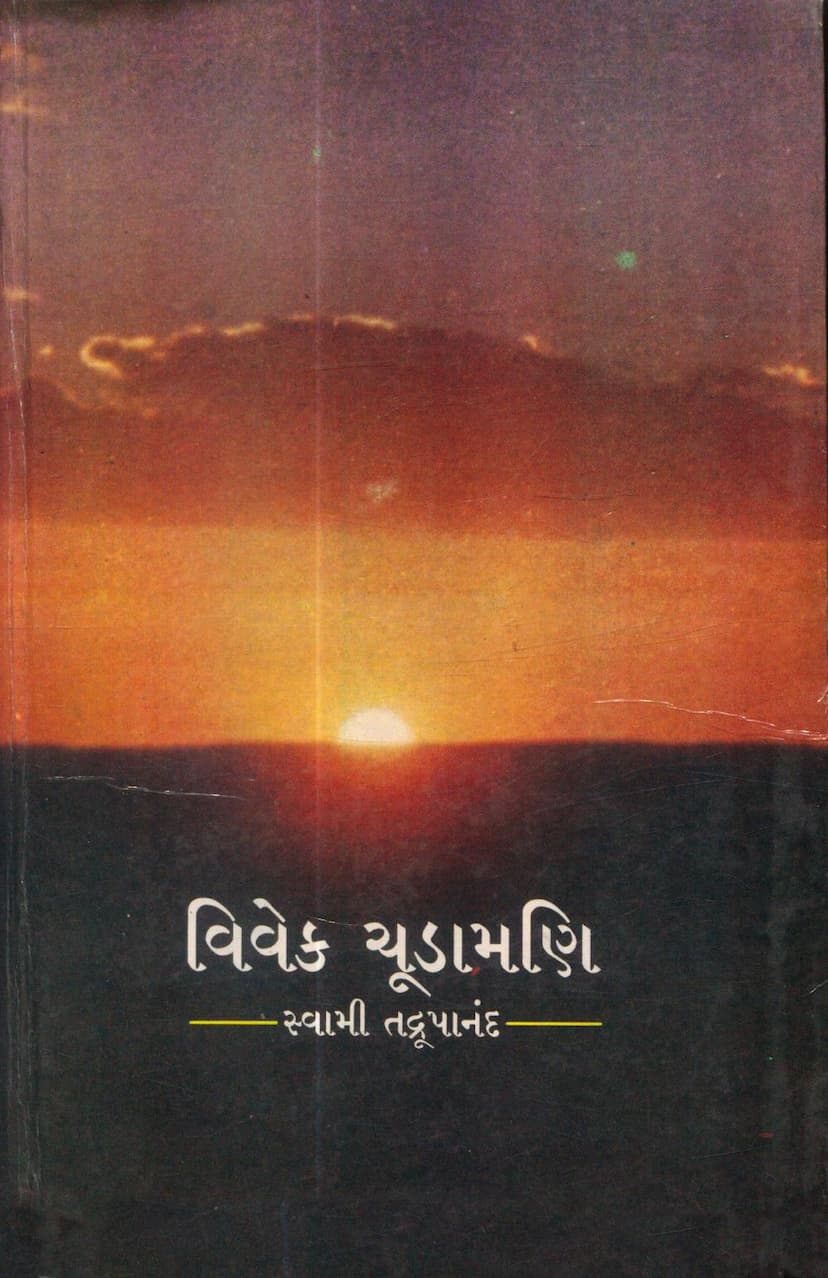Vivek Chudamani
Added to library: September 2, 2025

Summary
The provided Jain text is the Vivek Chudamani (The Crest Jewel of Discretion/Discernment), authored by Adi Shankaracharya and compiled by Swami Tadrupanand. The publisher is Manan Abhyas Mandal.
Based on the provided pages (1-18 and subsequent pages), here's a comprehensive summary:
Core Theme and Purpose:
The Vivek Chudamani is a foundational text in Advaita Vedanta philosophy, aiming to guide the seeker (mumukshu) towards liberation (moksha) by imparting the knowledge of true reality (Brahman) and distinguishing it from the unreal (Atman vs. Anatman, Brahman vs. Maya). It emphasizes the importance of discrimination (Viveka) as the key to spiritual realization.
Author and Compiler:
- Adi Shankaracharya (Original Author): The text is attributed to the renowned philosopher Adi Shankaracharya, revered as an incarnation of Lord Shiva. His philosophical contributions, especially the compilation of Upanishads and Bhagavad Gita commentaries, are highlighted.
- Swami Tadrupanand (Compiler): Swami Tadrupanand is credited with compiling this work, making Adi Shankaracharya's teachings accessible in Gujarati for the benefit of listeners in Vile Parle and Andheri.
- Swamini Tanmayanand (Editor): Swamini Tanmayanand is acknowledged for her meticulous editing work, organizing Swami Tadrupanand's transcription of the lectures into this text.
Key Concepts and Stages of the Path:
The text systematically outlines the path to self-realization and liberation, covering several crucial aspects:
-
The Rarity of Human Birth and the Opportunity for Liberation: The text begins by emphasizing the immense fortune of a human birth, especially one endowed with discernment, the capacity for Vedic dharma, scholarship, the ability to discriminate between the real and the unreal, direct experience, and ultimately, the realization of Brahman. It highlights that these are attained through immense spiritual merit accumulated over many lifetimes.
-
The Impermanence of the World and the Need for Renunciation: The text stresses the transient nature of all worldly possessions, relationships, and experiences, including even heavenly pleasures. It underscores the need for detachment (Vairagya) from these impermanent phenomena.
-
The Fourfold Qualifications (Sadhana Chatushtaya): For spiritual progress, four essential qualifications are described:
- Nityanitya Viveka: Discrimination between the eternal (Brahman) and the non-eternal (the world).
- Iha-amutra-phala-bhoga-viraga: Renunciation of desire for fruits and pleasures in this world and the next.
- Shat-sampatti: Six virtues – Shama (control of the mind), Dama (control of the senses), Uparati (renunciation/cessation from worldly actions), Titiksha (forbearance/endurance), Shraddha (faith), and Samadhana (concentration).
- Mumukshutva: Intense longing for liberation.
-
The Role of the Guru: The importance of a qualified Guru (Srotriya, Brahm Nishtha, etc.) who has realized Brahman is repeatedly emphasized. The Guru guides the disciple through the complexities of Vedanta and helps them overcome doubts and obstacles.
-
Discrimination (Viveka): The core of the text lies in the principle of Viveka – the ability to distinguish between the eternal (Brahman/Atman) and the non-eternal (the body, senses, mind, and the material world). This discrimination is the primary tool to dismantle ignorance.
-
The Nature of Reality: The text asserts that Brahman is the sole reality – eternal, unchanging, pure consciousness, and bliss. It is the substratum of all existence, the inner reality of all beings.
-
The Nature of the World (Jagat): The world is described as illusory (Maya) and impermanent. It is a superimposition on Brahman, like a snake seen on a rope in darkness. This illusion creates the sense of duality, individuality, and suffering.
-
The Five Koshas: The text analyzes the concept of the five sheaths (Koshas) that veil the true Self:
- Annamaya Kosha: The physical body, made of food.
- Pranamaya Kosha: The vital energy sheath.
- Manomaya Kosha: The mental sheath, responsible for desires and thoughts.
- Vijnanamaya Kosha: The intellectual sheath, responsible for discrimination and knowledge.
- Anandamaya Kosha: The bliss sheath, the closest to the Self, but still an appearance. The Atman is distinct from all these koshas.
-
The Self (Atman) vs. Non-Self (Anatman): A significant portion of the text is dedicated to differentiating the Atman (the true Self, Brahman) from the Anatman (the non-self, i.e., body, mind, senses, ego, etc.). The Atman is described as the witness (Sakshi), unchanging, unattached, and pure consciousness.
-
The Role of Maya and Ignorance (Avidya): Maya is the cosmic illusion that veils the true nature of Brahman and causes the appearance of the world and individual souls. Avidya is the individual ignorance that identifies the Self with the body-mind complex.
-
The Path to Liberation: Liberation is achieved through the removal of ignorance. This is primarily done through:
- Shravana: Hearing the teachings from a Guru.
- Manana: Reflecting on the teachings.
- Nididhyasana: Deep contemplation and meditation on the truth.
- Samadhi: Realization or absorption in the true Self.
-
The Importance of Self-Inquiry: The text repeatedly emphasizes that liberation is not achieved through external actions, rituals, or mere intellectual knowledge, but through direct realization of the Self through self-inquiry and the teachings of the scriptures (Mahavakyas like "Tat Tvam Asi").
-
The Nature of Liberation (Moksha): Liberation is the realization of one's true nature as Brahman, the state of absolute freedom from suffering, bondage, birth and death, and the attainment of eternal bliss. It is described as being ever-present and realized through the removal of ignorance, not through acquisition.
-
The Text's Structure: The provided pages also include a table of contents (Vishay Suchi) that lists the various topics discussed, following a logical progression of spiritual inquiry, from the initial qualifications of a seeker to the ultimate realization of Brahman.
Overall Message:
The Vivek Chudamani serves as a comprehensive manual for spiritual aspirants, guiding them with clarity, logic, and profound insight into the nature of reality, the self, and the path to liberation. It is a call to turn inward, discriminate the real from the unreal, and realize the oneness of the individual soul with the supreme reality. The compiler and editor's efforts are acknowledged for making this vital spiritual knowledge accessible.